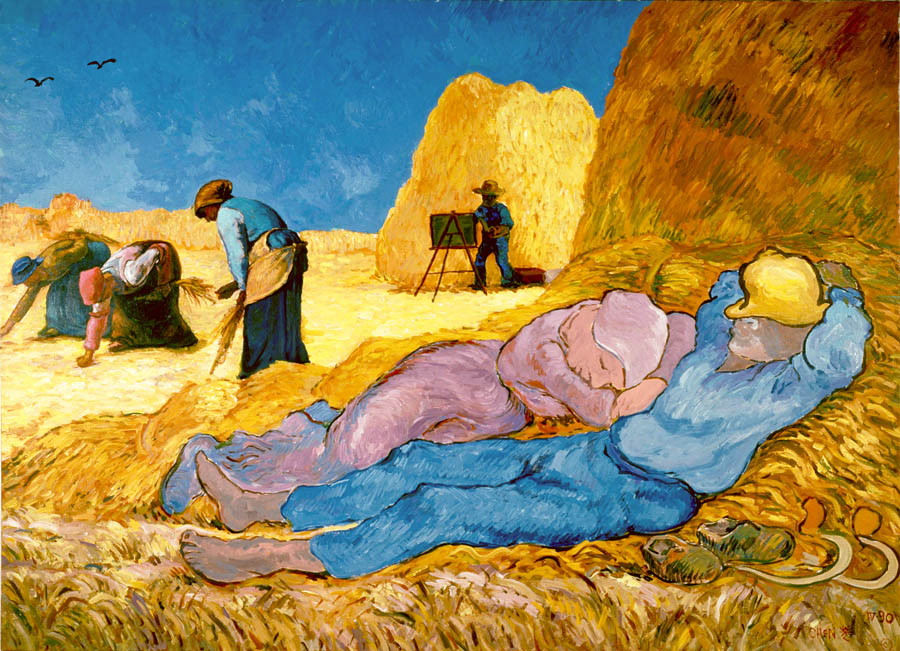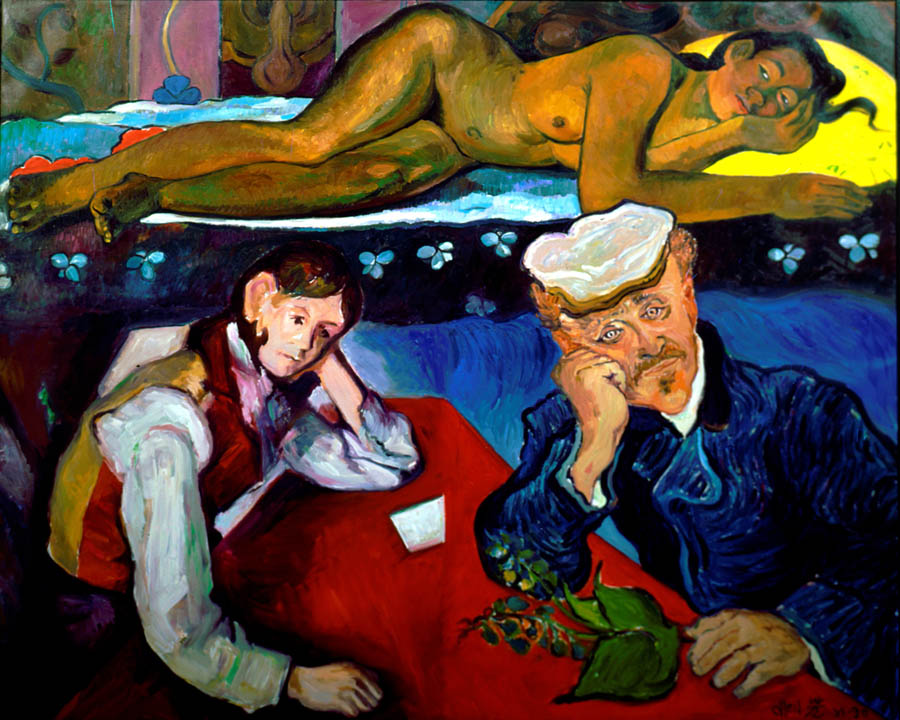
Working Hard
Copying after the works of masters is considered an effective way to learn good practice for beginning artists. In the spring of 1881, Vincent van Gogh decided to devote his life to art. An admirer of Jean-Francois Millet’s etchings, Vincent produced his first two studies after Millet’s “Sower” (1850) and “Mower” (1862) in pen and pencil, washed with watercolors. In Paris, Vincent studied the Japanese Ukiyo-e of Hiroshige and Yeisen, and copied their works in oil colors. Again, when he stayed in the asylum at St. Remy, Vincent copied after works of other beloved artists. Based chiefly on black-and-white reproductions, in 1890, Vincent painted after Rembrandt van Rijin’s “The Raising of Lazarus,” Honore Daumier’s “Man Drinking,” Eugene Delacroix’s “Pieta” and “The Good Samaritan;” and several of Millet’s works, including “The Siesta,” one of “The Four Hours of the Day.” Van Gogh felt that such kind of copying after esteemed masters was not merely copying, but rather “translation” as well as “creation.” In a letter to his brother Theo, Vincent wrote that copying after Millet’s “The Siesta,” was like “translating into another language, the language of color,” as he sought to express the subject in “soft blues and lavender, color with which the complimentary yellow plays an important part.” Using a study of Millet’s as a model, Van Gogh painted in oil a pleasant couple taking a nap under the shadow of some haystacks during the harvest season. To this scene, Chen added the famous image of Millet’s “Gleaners” (1857) onto the left-hand side, as well as a figure of Van Gogh in the middle of the canvas busy painting them under the serene autumn sky. Millet lived a half-century earlier than Van Gogh, who in turn, lived a half-century earlier than Dr. Chen. In Chen’s new painting, these three hard working artists from three different countries and three different eras, share a mysterious connection as art allows them to intersect time and overlap expressions. In his “Neo-Iconography” style, Dr. Chen weaves together familiar icons from the wide spectrum of world cultures, time and space, and art history to create new artworks with added dimensions of meaning and beauty. This concept of “assumptive situations” through “united time-space relationships” is also related to Post-Modernism.
– Julie Chen |
Working Hard

Golden Triangle of Post-Impressionism
2015 年 8 月 11 日

